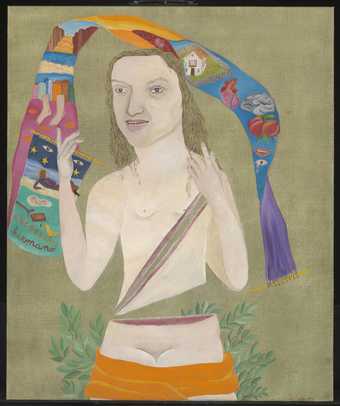What role does art play in politically tumultuous times?
This display considers how art was used as a form of protest responding to the 1973 coup d’etat in Chile.
On 11 September 1973, the first democratically elected socialist president in Latin America, Salvador Allende, was overthrown by a military coup. This led to public outcry and protests globally, including at the 1974 Venice Biennale and in London, where a number of socially engaged artists founded the Artists for Democracy and hosted A Festival for Democracy in Chile. The great sense of euphoria that Allende’s presidency represented was replaced by General Augusto Pinochet’s authoritarian regime during which time artists either emigrated from Chile or sought alternate ways to make their voices heard.
A Year in Art: 1973 explores how artists utilised art as a form of protest to express dissent, to bear witness, and to survive through turbulent times. It looks at one year as a departure point to consider long-term and far-reaching cultural repercussions. Bringing together works produced in various locations and time periods, the display highlights transnational solidarity networks and events that brought together artists, cultural workers, labour rights and political activists in unprecedented ways, merging art, life and politics.
The display includes work by Conrad Atkinson, Francisco Copello, John Dugger, Nicolás Franco, Alfredo Jaar, Carlos Leppe, Liliane Lijn, Lynn MacRitchie, Lotty Rosenfeld, Cecilia Vicuña, a selection of Arpilleras made by unknown artists from Chile, the music of Violeta Parra, and photobooks by Koen Wessing, David Burnett, Raymond Depardon, Chas Gerretsen, and Armindo Cardoso.
Curated by Clara Kim and Michael Wellen, with Fiontán Moran
Tate Modern

